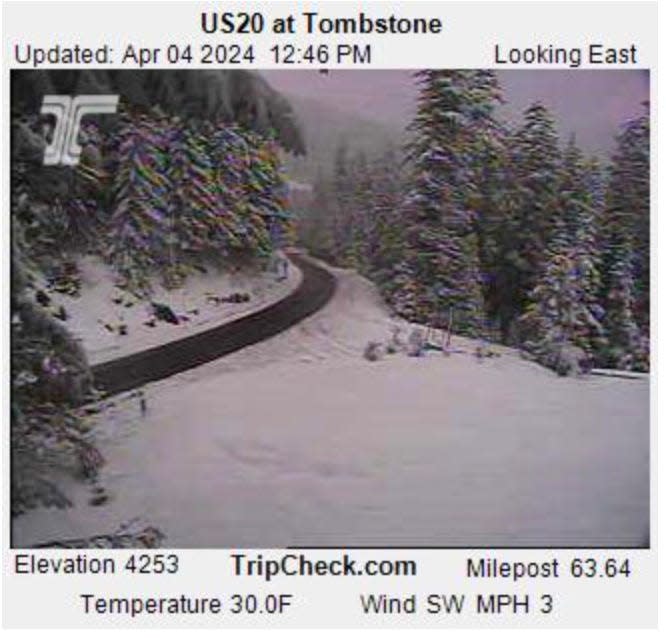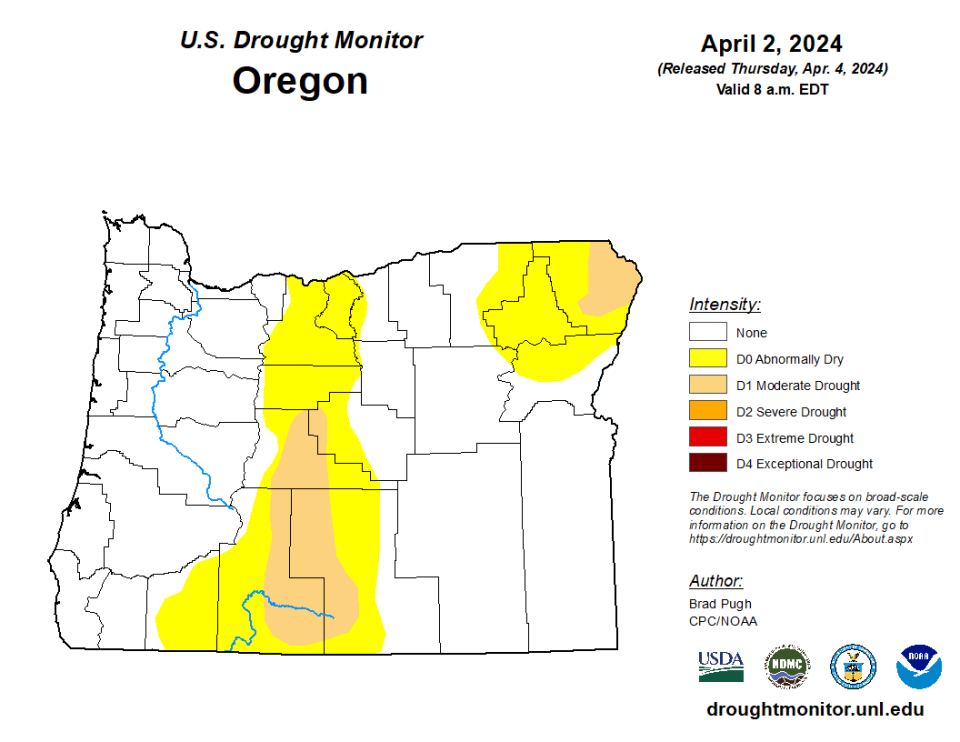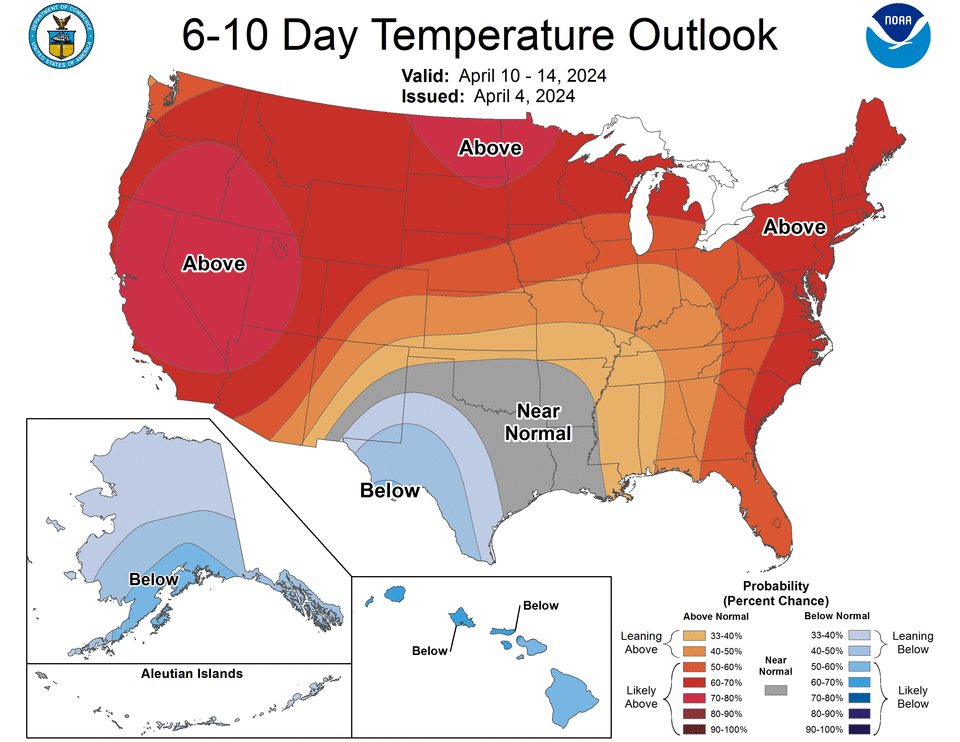Snow returns to Oregon mountains as snowpack, water, drought in ‘good shape’

Winter is making a brief return late this week and into the weekend, with cool temperatures and showers in the Willamette Valley and snow in the mountains.
A half-foot of snow is possible at Cascade mountain pass levels from Thursday to Sunday, but it's unlikely to bring major disruptions to travel. Instead, the system should shore up the state's snowpack and allow ski areas to keep running deep into spring.
The yo-yo of warm and cool temperatures is common in the Beaver State this time of year, and every last drop of rain is welcome as Oregon begins its turn toward the dry side of the year.
The good news is that by just about every metric — snowpack, rainfall and drought — Oregon is in pretty good shape.
"Right now, we're almost exactly normal (for water and snowpack)," state climatologist Larry O'Neill said. "That hasn't often been the case the last five or 10 years."
A normal or good water year is good news for pushing back wildfire season, for fish and wildlife and municipal water supply.
Drought at lowest level since 2019

The multiyear drought that has gripped Oregon is at its lowest point since October 2019. As a whole, Oregon's snowpack is 104% of normal while precipitation is 105% of normal.
Oregon actually had more snow in the mountains a year ago, but precipitation levels were lower last year.
"Our main water supply issues are pretty good," O'Neill said.
Oregon reservoirs mostly on track to fill
Oregon reservoirs are mostly on track to fill this year, O'Neill said.
That includes popular Detroit Lake, which is right about where it's supposed to be at this time of year at 1,542 feet above sea level. Many other Willamette Valley reservoirs are in good shape as well.
East of the Cascades, the picture is also good: Major reservoirs such as Lake Owyhee, Wickiup and Prineville are 70-100% full.
O'Neill said the only shortfall was in swaths of Central Oregon and the Klamath Basin. But, the water shortages are not nearly as bad as during recent years.
What happened to El Niño decline?
Winter got off to a slow start, and the El Niño pattern had many worried about a dry and hot winter.
National Weather Service meteorologist Colby Neuman said Oregon got a bit lucky to capture a decent amount of the moisture heading toward California.
“We’ve been fortunate to be close enough to storm track that is normally a little farther to the south, especially over last month, that we still ended up getting a fair amount of mountain snow and cooler weather,” he said. “Oregon is often kind of in the middle in El Niño years, and you actually see that this year. Washington is really hurting for snow, but California is doing very well.”
Oregon ski areas stay open longer
A plus of the normal snowpack is that most of Oregon's ski areas are staying open through April and in some cases into May.
After a historically late start to the season — some ski areas didn't open until early January — the late season should help some make up lost revenue.
Warm weather returns next week

While the next five days are forecast to be cool and wet, warm and dry weather does return next week.
Temperatures are forecast to rise well above normal, which could lead to an early melt of snow. That could start bringing Oregon back into drought sooner rather than later as summer approaches.
"If we do melt out pretty fast, it won't take long to get pushed back into drought, just because in many places indicators like soil moisture haven't fully recharged," O'Neill said.
That could negate the progress and lead to an early wildfire season, as happened a year ago.
Zach Urness has been an outdoors reporter in Oregon for 15 years and is host of the Explore Oregon Podcast. Urness is the author of “Best Hikes with Kids: Oregon” and “Hiking Southern Oregon.” He can be reached at zurness@StatesmanJournal.com or (503) 399-6801. Find him on Twitter at @ZachsORoutdoors.
This article originally appeared on Salem Statesman Journal: Oregon mountains to see snow with snowpack, drought in ‘good shape’

